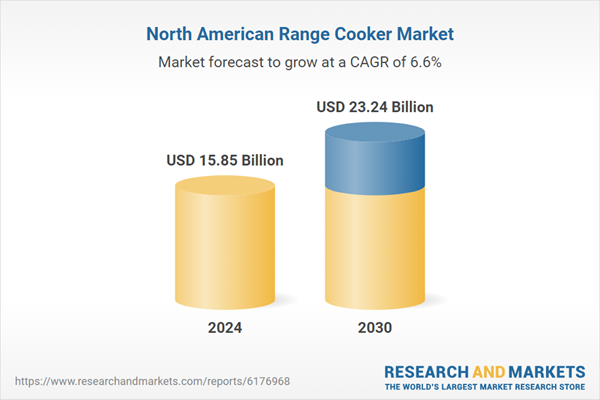Speak directly to the analyst to clarify any post sales queries you may have.
10% Free customizationThis report comes with 10% free customization, enabling you to add data that meets your specific business needs.
Market Drivers
Rising Consumer Preference for Premium and Multifunctional Kitchen Appliances
One of the most significant drivers fueling the North America range cooker market is the growing preference for premium and multifunctional kitchen appliances. Modern consumers are no longer satisfied with basic cooking appliances; instead, they increasingly demand high-performance products that offer convenience, versatility, and efficiency in a single unit. Range cookers, which combine multiple cooking options such as ovens, grills, and hobs, perfectly align with this demand. Their ability to support a variety of cooking methods - baking, roasting, grilling, and induction - makes them highly attractive for households that value flexibility in meal preparation.The rising popularity of open kitchens and modern modular kitchen designs in North America further strengthens this trend, as range cookers serve not only as functional equipment but also as stylish statement pieces that enhance overall kitchen aesthetics. The integration of smart features, such as app connectivity, programmable settings, and energy optimization, has elevated their appeal among tech-savvy consumers who seek efficiency and control. Additionally, consumers in the U.S. and Canada show a growing inclination towards home cooking due to increasing health consciousness, which further boosts the demand for advanced cooking appliances. With homeowners willing to invest in premium solutions that blend performance with luxury, range cookers have carved a strong niche in the North American household appliance market.
Key Market Challenges
High Initial Cost and Limited Affordability
One of the primary challenges hindering the growth of the North America range cooker market is the high initial cost of these appliances, which limits their accessibility to middle- and lower-income households. Range cookers are typically positioned as premium products, with advanced features such as multiple ovens, induction hobs, and smart connectivity, leading to higher price points compared to conventional cooktops or built-in ovens. For many cost-sensitive consumers, especially in the current inflationary environment, such investments are considered non-essential. This pricing barrier restricts mass adoption and confines the market to affluent segments, slowing overall growth despite rising interest in premium appliances.Key Market Trends
Rising Adoption of Smart and Connected Range Cookers
One of the most prominent trends shaping the North America range cooker market is the increasing adoption of smart and connected cooking appliances. Consumers across the region are increasingly integrating smart home technologies into their daily lives, and range cookers are no exception. Manufacturers are introducing models equipped with Wi-Fi connectivity, app-based controls, and compatibility with voice assistants like Amazon Alexa and Google Assistant, allowing users to monitor and control cooking remotely. Features such as pre-programmed recipes, automatic temperature adjustments, cooking alerts, and energy optimization not only improve convenience but also enhance precision in meal preparation.This aligns well with the growing preference for time-saving, user-friendly technologies among busy households. In addition, younger generations, particularly millennials and Gen Z, are more inclined toward adopting smart appliances that integrate seamlessly into their digitally connected lifestyles. The availability of these advanced features also makes range cookers appealing to tech-savvy homeowners upgrading their kitchens as part of remodeling projects. As smart kitchens continue to gain traction in North America, connected range cookers are expected to become a mainstream trend, significantly influencing consumer purchase decisions.
Key Market Players
- Whirlpool Corporation
- GE Appliances
- Samsung Electronics
- LG Electronics
- Viking Range, LLC
- Wolf (Sub-Zero Group, Inc.)
- Bosch
- KitchenAid
- Frigidaire
- Maytag
Report Scope:
In this report, the North America Range Cooker Market has been segmented into the following categories, in addition to the industry trends which have also been detailed below:North America Range Cooker Market, By Product Type:
- Free-standing
- Slide-in
North America Range Cooker Market, By Technology:
- Smart
- Conventional
North America Range Cooker Market, By Distribution Channel:
- Online
- Offline
North America Range Cooker Market, By Country:
- United States
- Canada
- Mexico
Competitive Landscape
Company Profiles: Detailed analysis of the major companies present in the North America Range Cooker Market.Available Customizations:
With the given market data, the publisher offers customizations according to a company's specific needs. The following customization options are available for the report.Company Information
- Detailed analysis and profiling of additional market players (up to five).
This product will be delivered within 1-3 business days.
Table of Contents
Companies Mentioned
- Whirlpool Corporation
- GE Appliances
- Samsung Electronics
- LG Electronics
- Viking Range, LLC
- Wolf (Sub-Zero Group, Inc.)
- Bosch
- KitchenAid
- Frigidaire
- Maytag
Table Information
| Report Attribute | Details |
|---|---|
| No. of Pages | 132 |
| Published | September 2025 |
| Forecast Period | 2024 - 2030 |
| Estimated Market Value ( USD | $ 15.85 Billion |
| Forecasted Market Value ( USD | $ 23.24 Billion |
| Compound Annual Growth Rate | 6.5% |
| Regions Covered | North America |
| No. of Companies Mentioned | 10 |









